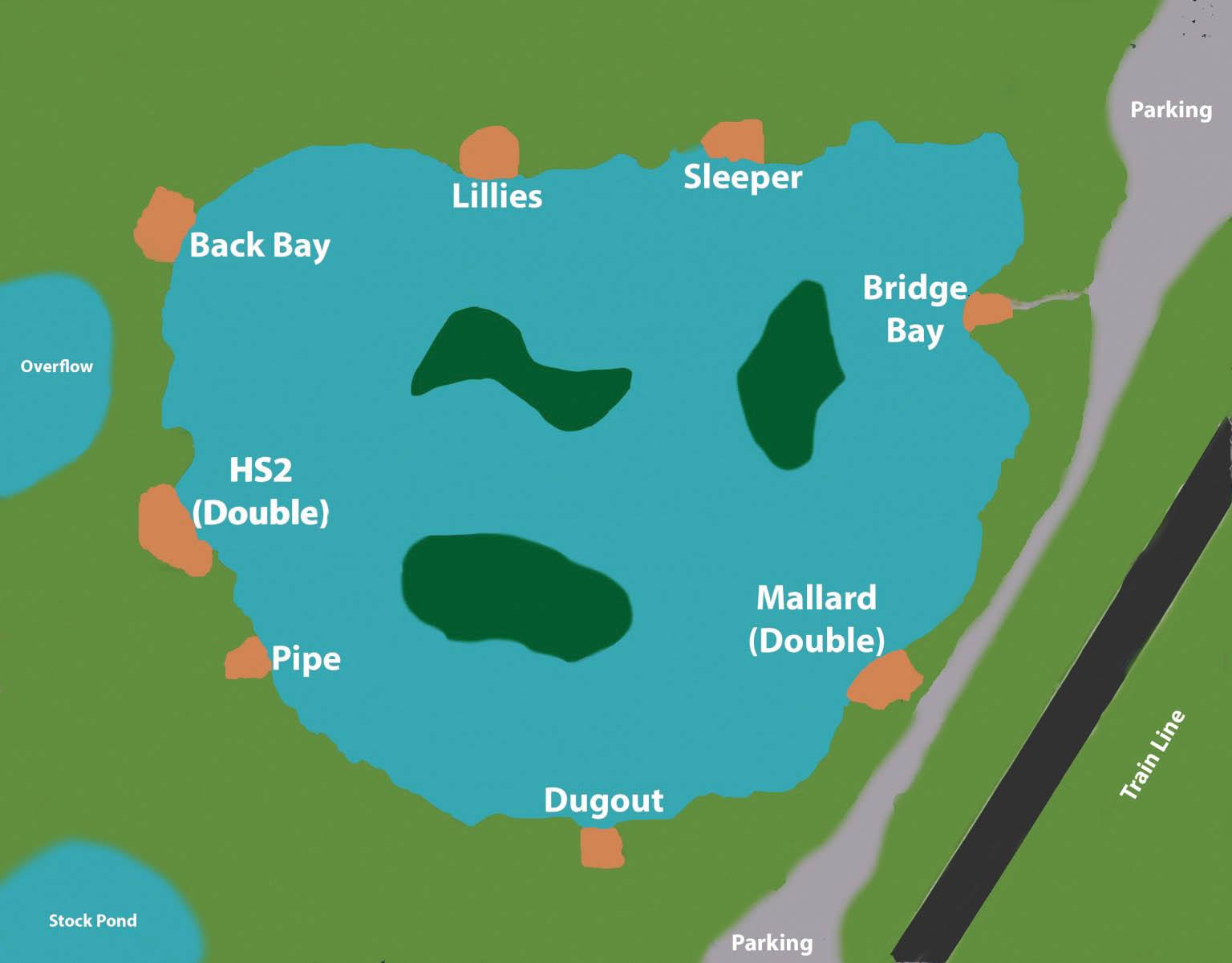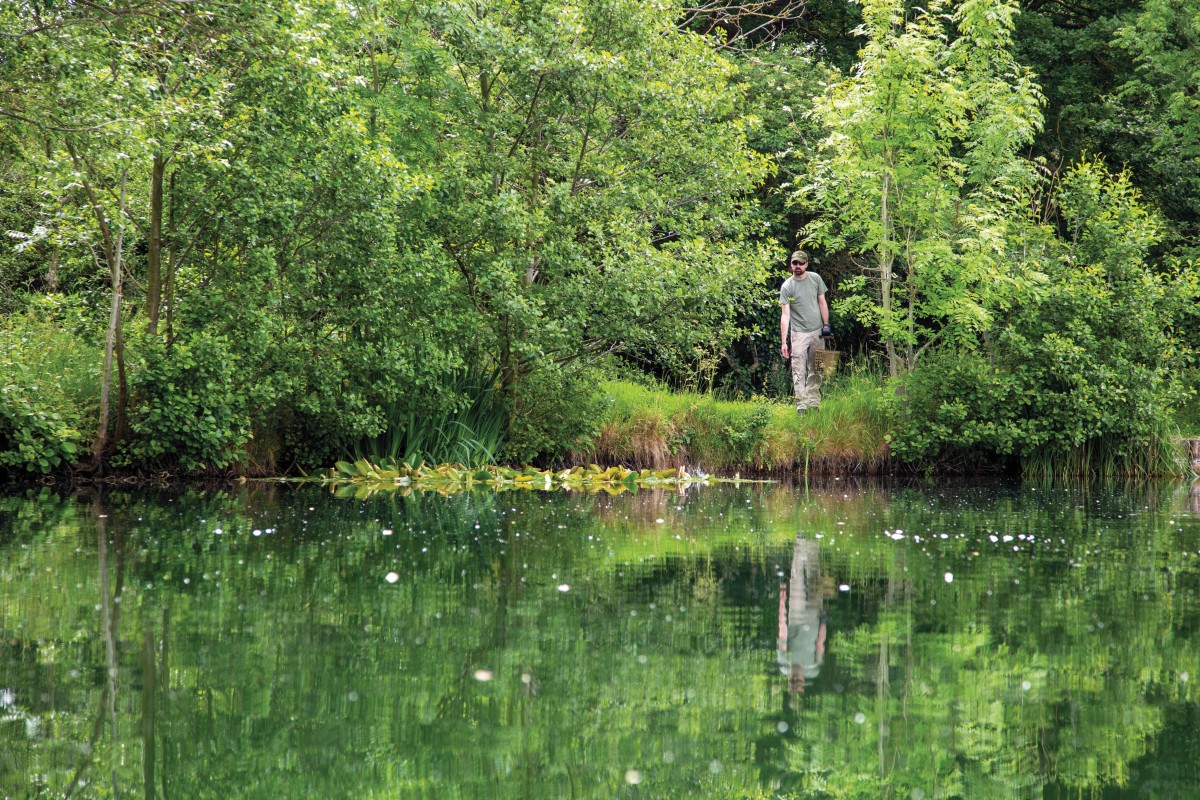
Open Access Venue: Lavender Hall Fishery
After making an uncannily accurate assessment of how things would later turn out, Stu Lennox sets about banking a fish from a pressured West Midlands day-ticket water… Here’s how he did it…
This month, we visited Lavender Hall Fishery, a five-lake complex just outside Coventry. It was first dug back in the late 1990s when the original owner had a hired plant available after completing some work elsewhere. The lakes were stocked with a variety of species, but with little experience in fishery management, the owner sold the venue in 2004. At that juncture, the fishery’s current owners, Tom Laurie and family, took over. From then on, the lakes went from strength to strength, and were transformed into the complex that we see today. Of the five lakes on site, three are used predominantly by match and general coarse anglers. Oak Lake is an intermediate carp water, with fish from low doubles up to scraper-twenties. The main carp water is Station Lake, and that’s where we will be focusing our efforts on this occasion.
Into the session
Station Lake is around two acres in size, and is dominated by three large islands. Originally a match fishery, it used to hold thousands of small fish. Fishing was from the islands themselves, although there were only two when the water was first dug, and these were accessible via a series of bridges. When Tom took over, he removed the bridges and created a spit, and this now affords access to the three large islands now present.
Each year, Station Lake is netted and fish are moved to the other lakes on the complex. Small fish are transferred to the match and general coarse lakes, double-figure carp are placed in Oak Lake, and only the biggest, and best-looking carp are left in Station Lake. In February 2022 it was netted once again, and 35 double-figure fish were removed. These included all the VS Fisheries carp stocked in 2019 that, for whatever reason, had not thrived sufficiently to reach their full potential. This netting left a stock of around 30 fish, pretty much all of which are originals from the first stocking back in the 1990s.
Chris was enjoying a holiday in Turkey at the time of my visit, so it was just cameraman, Tom, and me bankside, and ahead of our trip we booked pegs named Sleeper and Back Bay—a number of fisheries are moving over to pre-booking, and apps like Catch make the process much easier. Whilst this system might remove most aspects of watercraft, I must admit that the peace of mind from knowing that you’ll have your own piece of water when you arrive at a venue is quite refreshing. As such, I was able to leave home at a reasonable time, without having to queue at a gate on arrival, or race other anglers for a swim. I could also take as much time as I liked when walking our end of the lake, and could formulate a plan without having to worry about not getting a peg. Whilst it may not be for everyone, I think there is certainly a place for this more relaxed arrangement of swim selection. I feel we may well see it used at more and more venues.
Given my freedom of having a peg already secured (thanks Catch!), I was able to take my time setting up. After the 8 a.m. changeover, I decided to let the rest of the lake’s anglers set up whilst I let our end rest. I hoped that all the commotion might push fish down to us, and when I heard a mallet being used to bang in bivvy pegs, I knew that there’d be a good chance of just that being the case.
Taking things quite leisurely, I headed to the incredible on-site tackle shop and the cafe. There, I enjoyed a full breakfast and a brew, sitting outside in the mid-morning sunshine. After I’d polished off my plate of greasy goodness, I went into the tackle shop, where Scott behind the till ran through a few tips with me. The lake was fully occupied all weekend. Anglers had come and gone each morning, and as a consequence, a large number of lines had been out in the water. This would all make the fishing tough. I knew, then, that I was going to have to be as quiet and as stealthy as I could be, and remain so throughout the entire trip if I were to stand any chance of success. From what Scott had said, I felt that just one fish during the session was a realistic target.
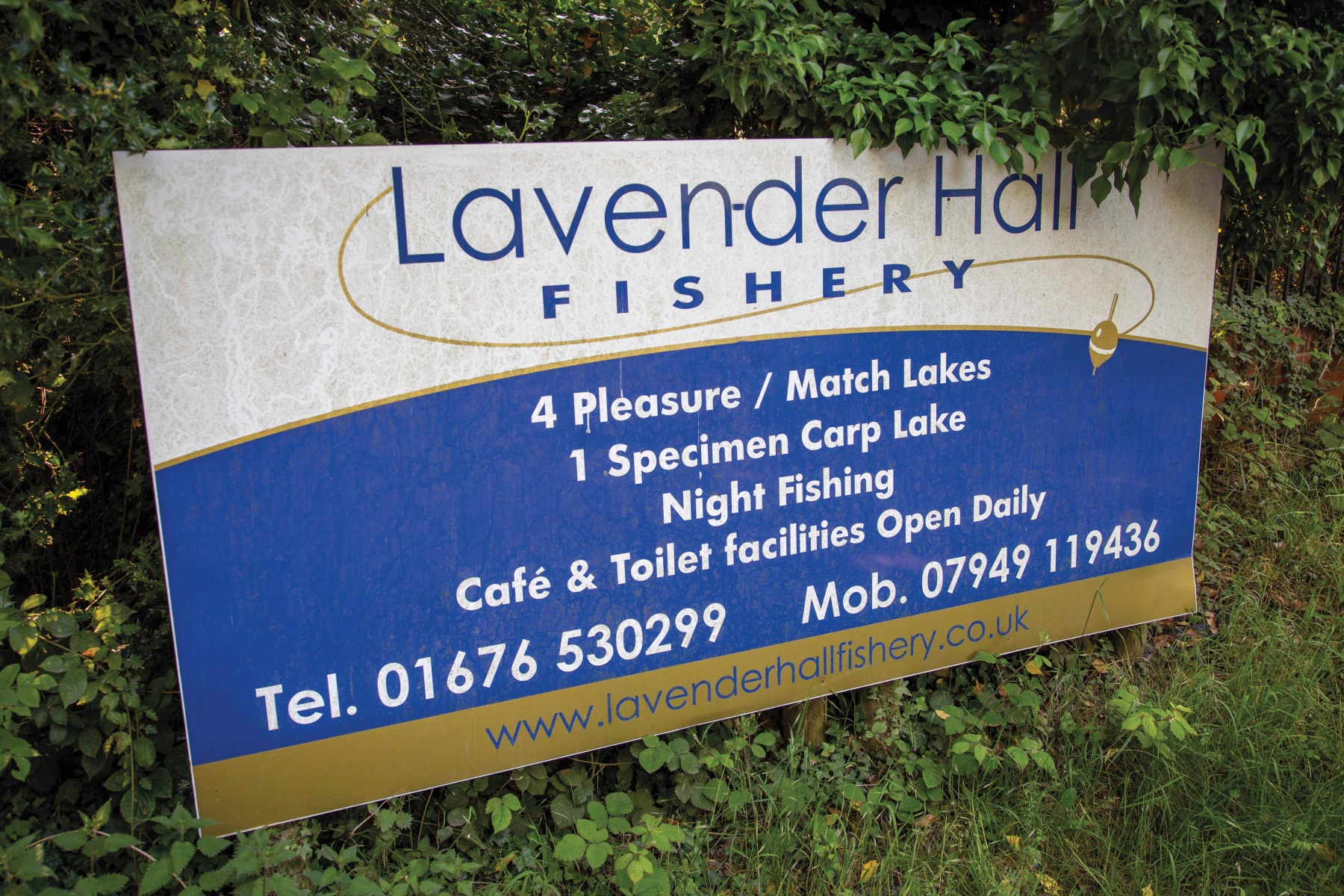
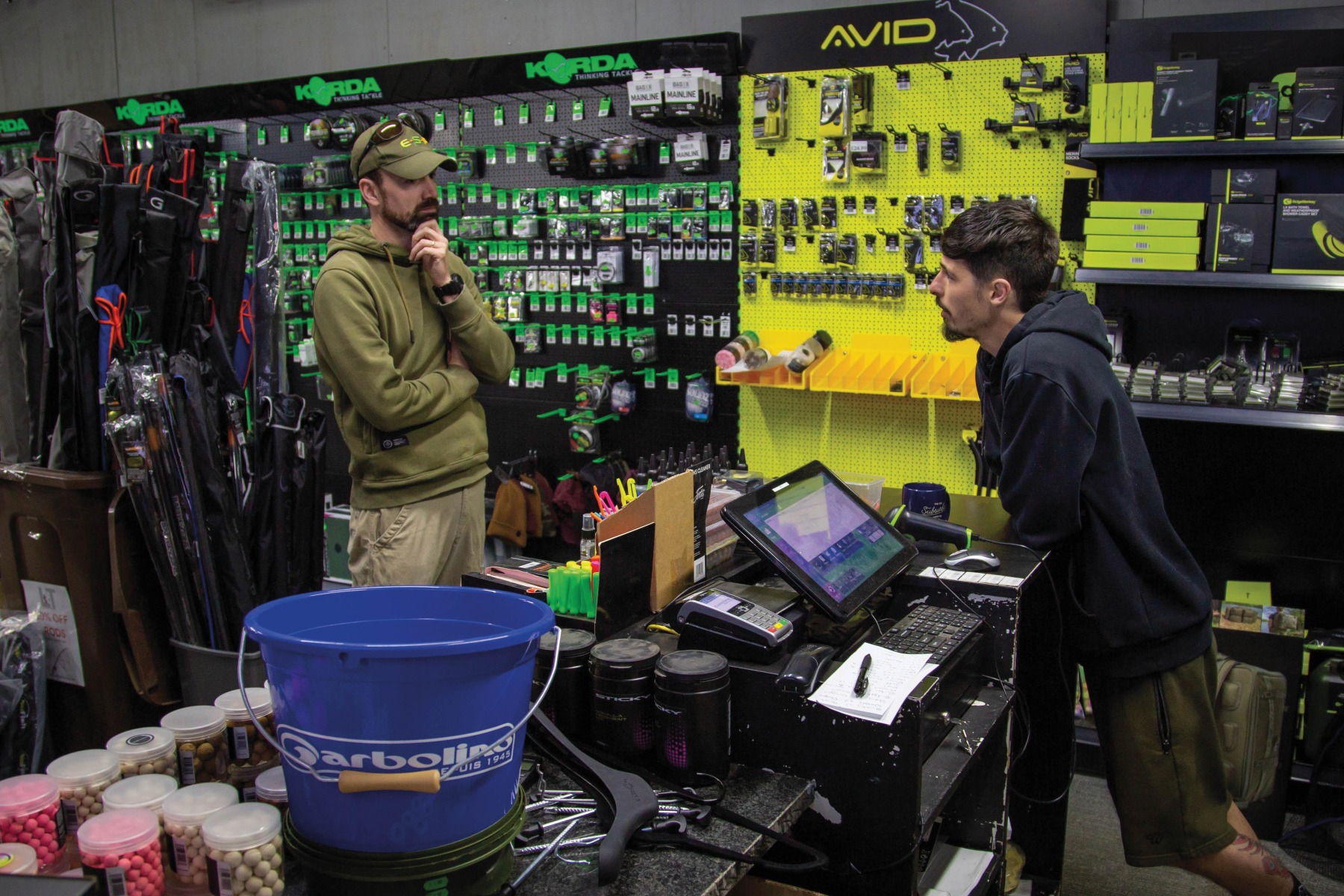
I wandered back down to the lake and loaded up the barrow. Heading for Sleeper, as I came around the corner into Back Bay, I thought I saw a fish through the reeds. I froze, placed the barrow down gently and sneaked into the peg. Resting the peg had obviously done it some good. As I watched from behind a tree, I began to see an ever-increasing number of fish. I counted at least eight different carp, not a huge number, but given the low stock, a good proportion of those that inhabited the lake were in front of me.
I grabbed my floater-fishing gear from the top of my barrow and quickly prepared some mixed floaters, the same combination as we used last month at Linear Fisheries: 6 and 11mm Sticky Baits The Krill and the same sizes of standard trout pellets, all coated with Pure Salmon Oil. The oil has definitely made a difference in the fishes’ feeding response during my last couple of floater sessions, and I now use it wherever I go.
I sprayed a few pouchfuls of floaters out in front and waited for the fish to react. A couple of carp remained still and docile under the hot, midday sun. A few, however, were slowly drifting around, and I felt these were most likely to take a free offering or two. After about 30 minutes of trickling in floaters, I began to see the smallest of disturbances dimpling the surface. There were huge numbers of silver fish present, and you could see them attacking the floaters, but I was able to discern between these and the attentions of the carp. As I looked closer, I could see that some were very cautiously mouthing my floaters and taking the odd one here and there. The fish weren’t completely settled, however, and only one or two were actually taking baits.
After another half an hour or so, I decided that I was going to have to try and ambush a fish, as we had done at Linear. This involved working out the route a fish was taking before casting a hookbait in its path. As always, I started off with half a Manilla pop-up, as these are easy to see out in the pond. I used the smallest controller I could get away with, in an effort to reduce disturbance of the surface when casting, and given that I’d be doing so frequently.
One particular fish was taking single offerings all over the bay in front of me. It would take one, and then swim 15 metres or so before taking another. There was no real pattern to its movements, but whenever it came across a patch of baits, it would take one before moving on. It was out by the island and was moving my way, so I fired a pouchful of floaters ahead of it and cast my hookbait to the far side. I hoped that it would come to my hookbait first. The fish approached the little patch of floaters, just missing my hookbait before it sucked in a freebie.

During the course of the next hour, I made around 12 casts, and in that time the fish ate no more than six to eight floaters. It continued to hang around, though, taking floaters sporadically, so I felt that this remained my best chance of a bite, given the scorching heat. I repeated my cast once more, and this time it landed perfectly. I watched the fish come around the island margin again and approach the hookbait. In what seemed like slow motion, the fish rose in the water, opened its mouth and engulfed the hookbait. I struck instantly… the controller flew past my ear and landed in the grass behind me! I cursed my luck after being too hasty and set about going through the whole process again. Amazingly, within the hour, the same fish returned to continue taking the odd floating pellet. It was easily recognisable, as every time it took a bait, rather than suck it from beneath the surface, a large proportion of its head would come out of the water.
By this time, a couple of gulls had turned up and were starting to cause a bit of an issue every time I fed any floaters. I decided to use a ‘scare line’ to try and keep the birds at bay, casting a bare lead across to the island margin and then propping my rod up in the air in my own. The brightly coloured braid from the reel on my spod rod ran from my bank to the island about four feet above the surface. The tactic worked perfectly and kept the gulls away from the water immediately in front of me. Whilst they took every bait that floated away, I had a small area of water to work with, and continued to try and get something going.
Another hour passed before the same, easily recognisable fish returned, and once again it started to take single floaters. I made a number of casts, but couldn’t quite get it right. Eventually, however, I managed to place my hookbait perfectly. The fish approached, and slowly slurped it down. This time, I counted to three before striking, but this had the exact same outcome as my first effort… I hit fresh air and the controller sailed past me and into the hedge!
I was absolutely adamant that the fish had taken the hookbait, and when we looked back through the photos that Tom had taken, we could see the issue. The fish had an oddly shaped mouth. Its top lip was offset, and even though it had seemingly taken the bait on both occasions, it was a nigh-on impossible task to set the hook. The gulls were causing even more of a problem by this time, too. At least ten dive-bombed to pick up floaters, and it appeared as though any opportunity of a surface-caught carp had passed, at least for the time being. I left for my swim, and to formulate a plan for the night.
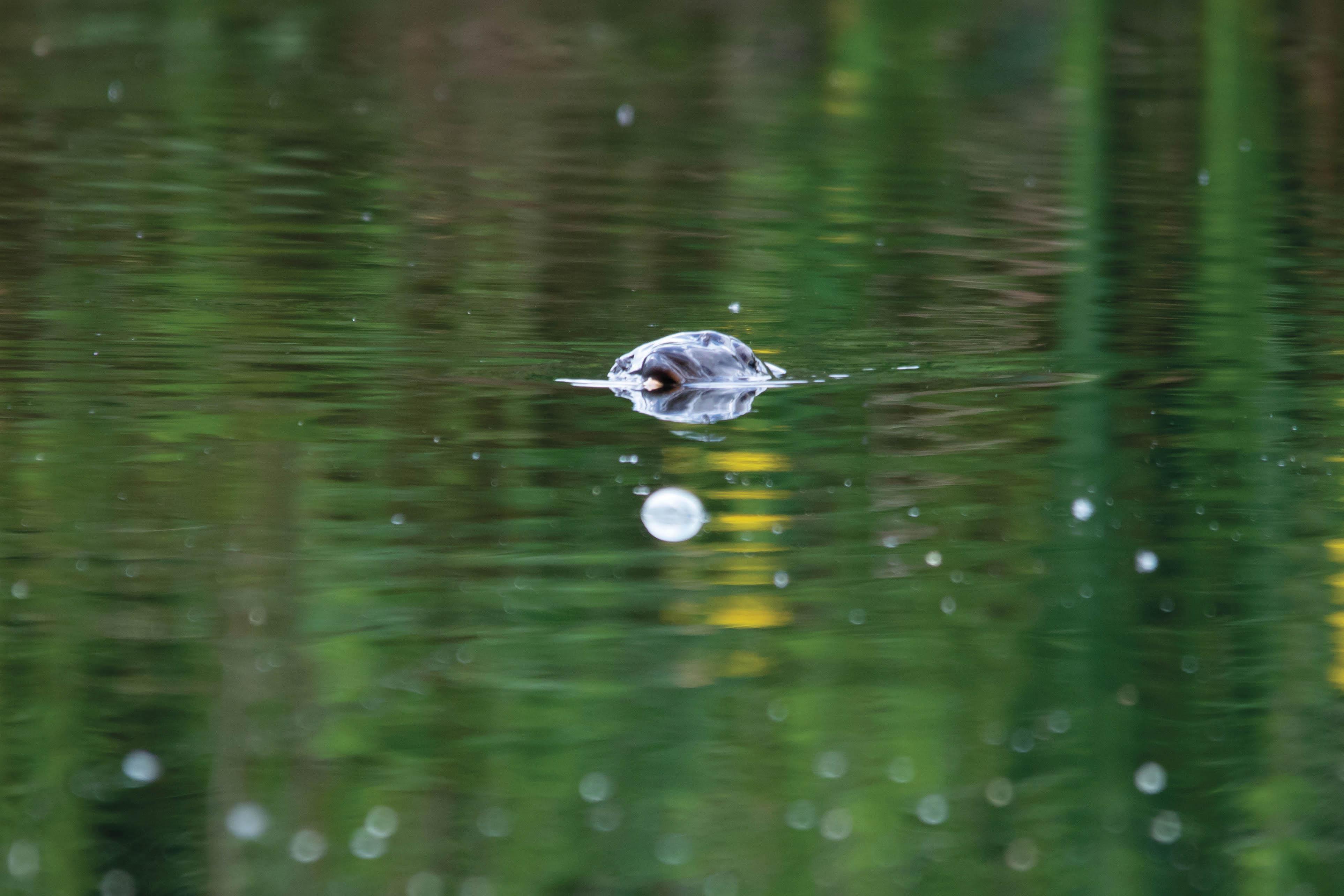
The tactics
The problem in Sleeper—and pretty much all of the pegs at Lavender Hall—is that there are just so many options! You couldn’t fish all the likely-looking spots, even with 10 rods, so I would have to spend a bit of time deciding where to put place those I was using. Of the obvious choices, the tips of the islands looked really good. A steady procession of carp continued to navigate the right-hand island, tight to the bank and with their backs breaking the surface. I felt that a bait placed there with the Bushwhacker would stand a really good chance of bringing about a bite. The left-hand island also looked good. It featured a small recess in the reeds—a likely holding spot for a fish or two, perhaps.
What I also liked about the intimate nature of the lake and the close-range fishing on offer, was that it provided me with an opportunity to try out the 10ft Oynx rods and Oynx Compact reels I had recently received. These are perfect for such fishing, and they make everything much more enjoyable.
I decided on a particle approach with corn hookbaits. From all around me, I could hear boilies being fired in. I concluded that if I were to stand a chance of a bite, I would have to do something a little different. I mixed some fresh hemp from Carbon Baits with a couple of handfuls of their frozen bloodworm, before adding a generous helping of corn and some salt. I wanted to fish solid bags, mainly because I have so much confidence in them, but also as I could ship them out anywhere around the islands and be relatively content that they’d present well. Each time I shipped out, I covered the bottom of the spoon with 2.3mm Sticky Baits Manilla pellet, before placing a handful of the hemp mix on top. This was placed in the margin with the minimum of disturbance.
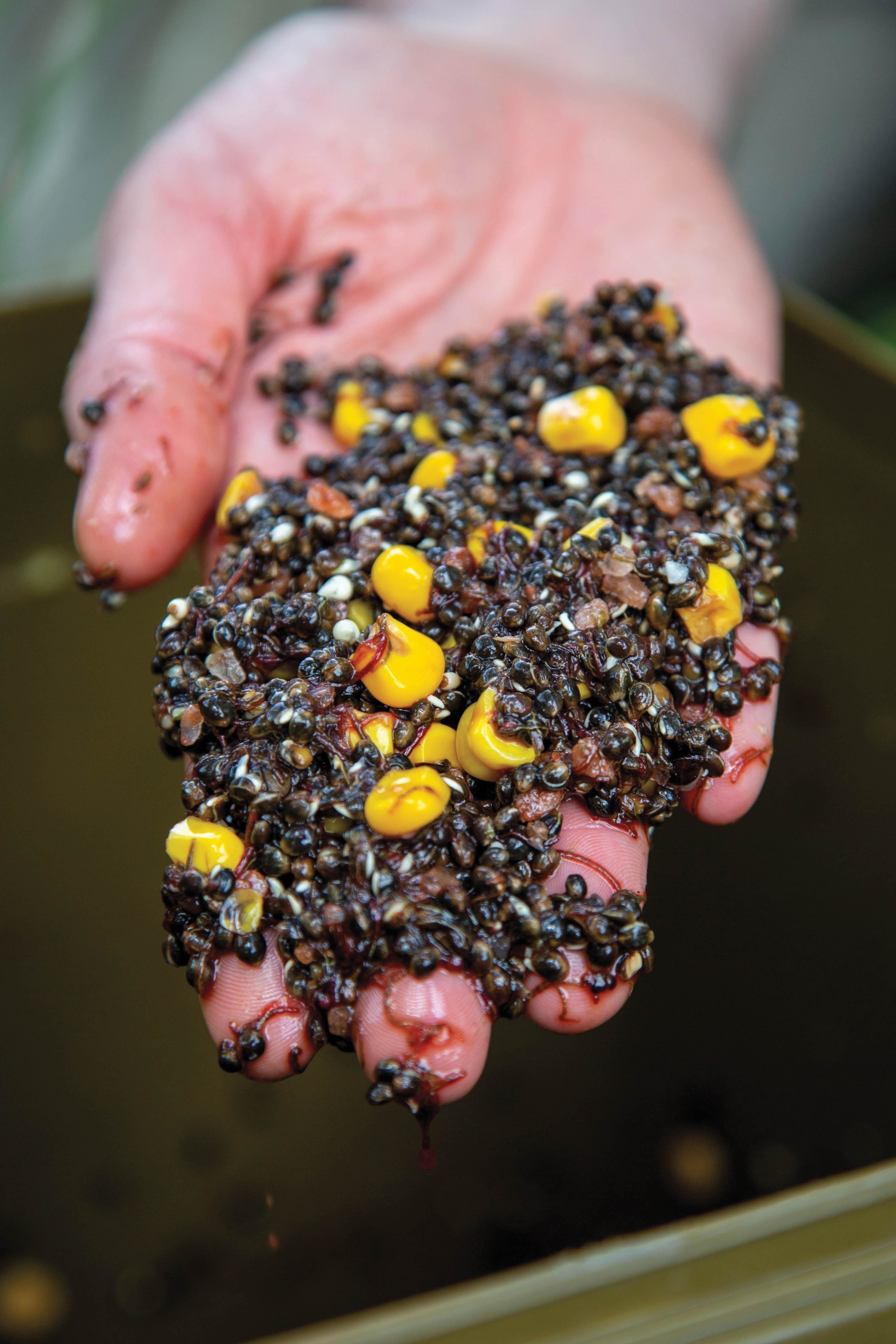
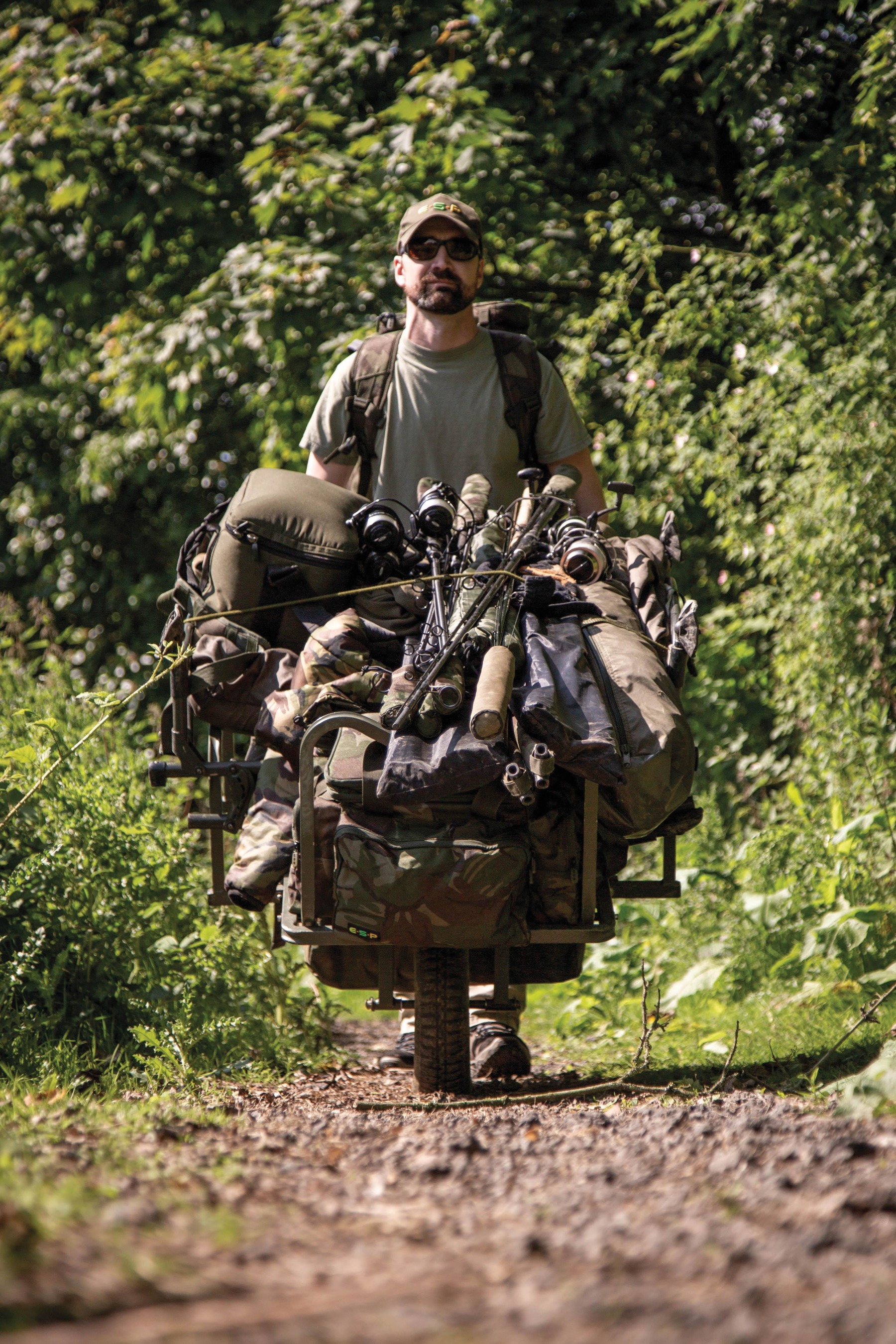
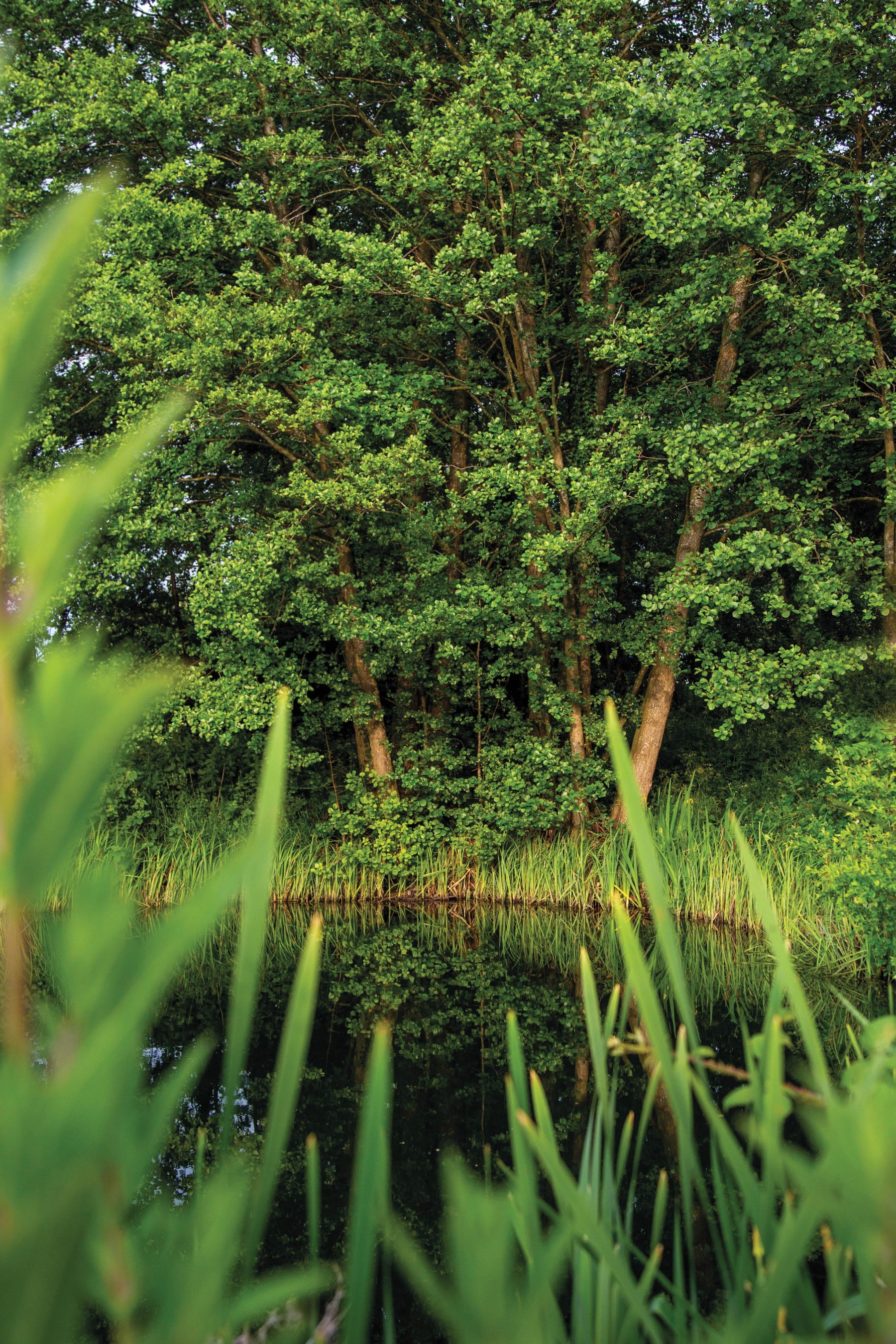
I was fishing a combination of corn and plastic imitations, with a sinking offering on one rod and a buoyant one on the other. These were attached to size 4 ESP Cryogen Curve Shanx barbless hooks. I like to use a bigger hook and much larger piece of shrink tube when fishing barbless-only venues, and my Curve Shanx size 4s were tied to a short length of supple braid, a 3oz inline lead completing my set-up. This was pretty standard tactics for solid-bags, the only edges really being the inclusion of the bloodworm pellets, and my decision to use particle instead of boilies.
A good-quality boilie would definitely work, and Sticky’s The Krill remains a firm favourite with many regulars. I felt, however, that given the constant pressure on the water all through the weekend, something different was required. I was using a heavy, fluorocarbon main line and I fished this ultra-slack, my Gemini Tackle fluorocarbon leader keeping everything as inconspicuous as possible. If I had been fishing open water, I would have also added a backlead, but because I was up on the shelf, I decided against doing so.
There were also a number of likely-looking margin spots between our swims, and down to the right of Tom’s a couple of sets of pads looked really good. I trickled a few handfuls of my same particle mix onto half a dozen spots with a view to checking them throughout the session, fishing them only if I saw signs of activity.
The evening dragged on. I was surprised that I’d had no action, as odd fish continued to drift over the margin of the right-hand island, almost directly above where I’d placed a bait. Here I felt I should have had a take.
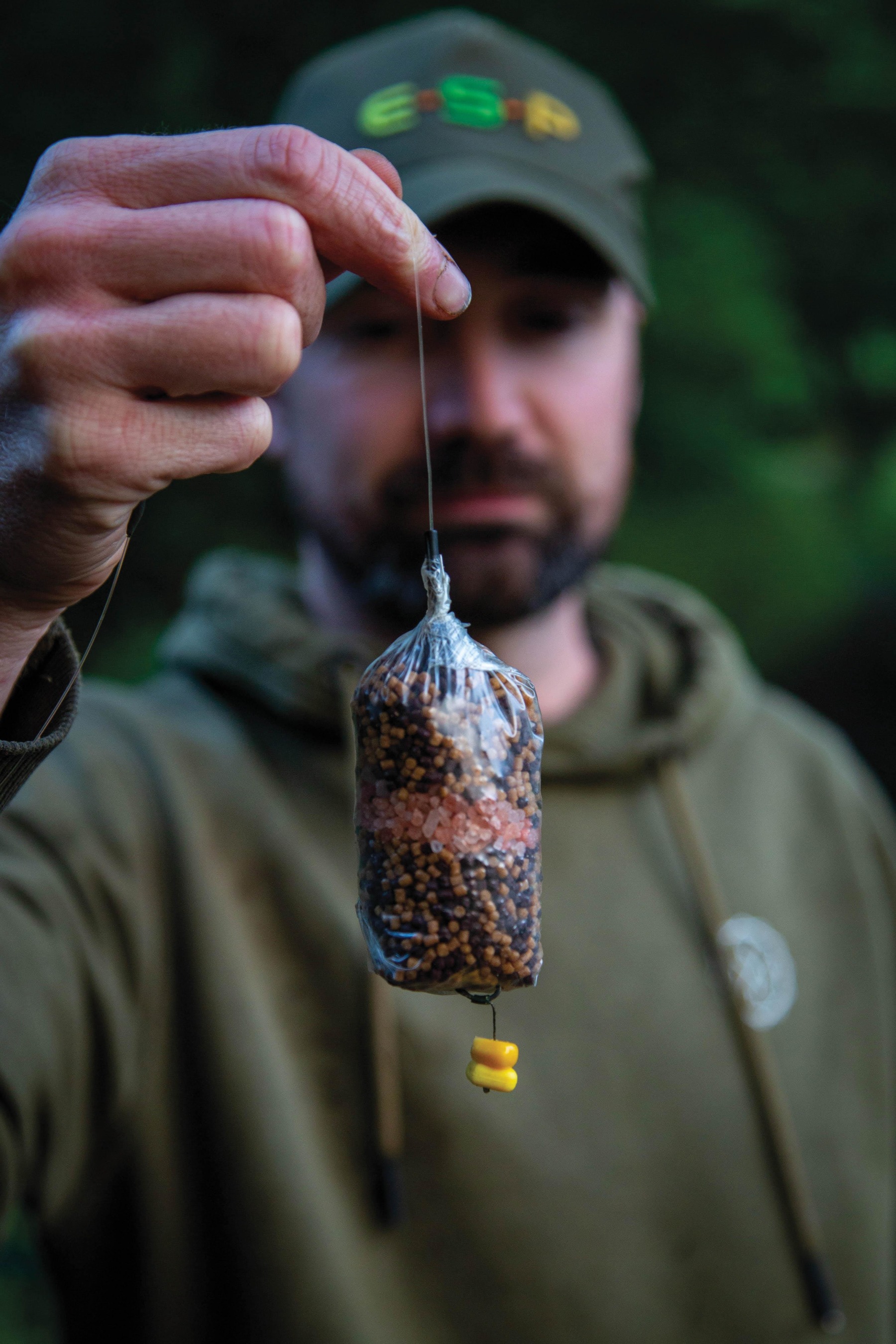
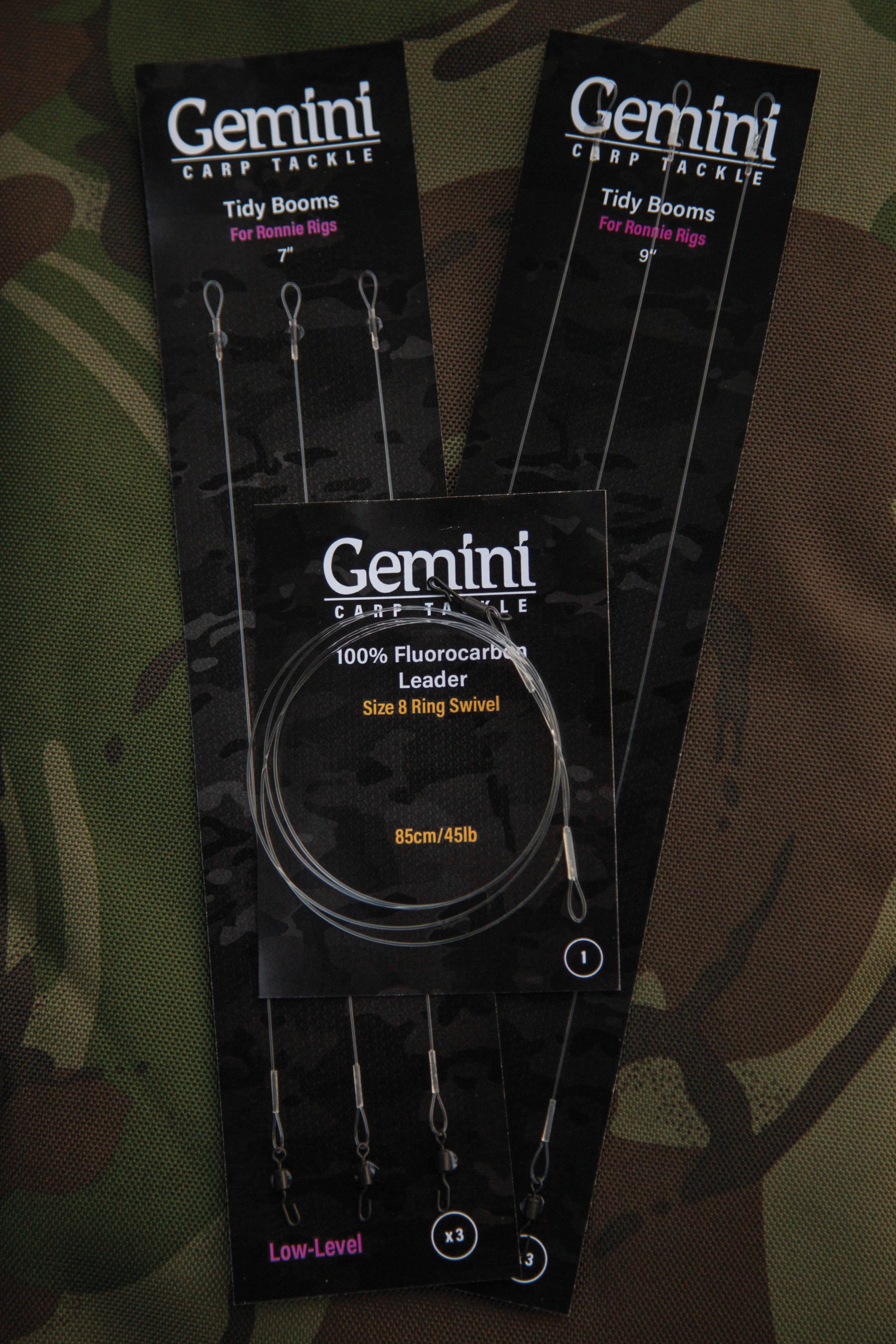
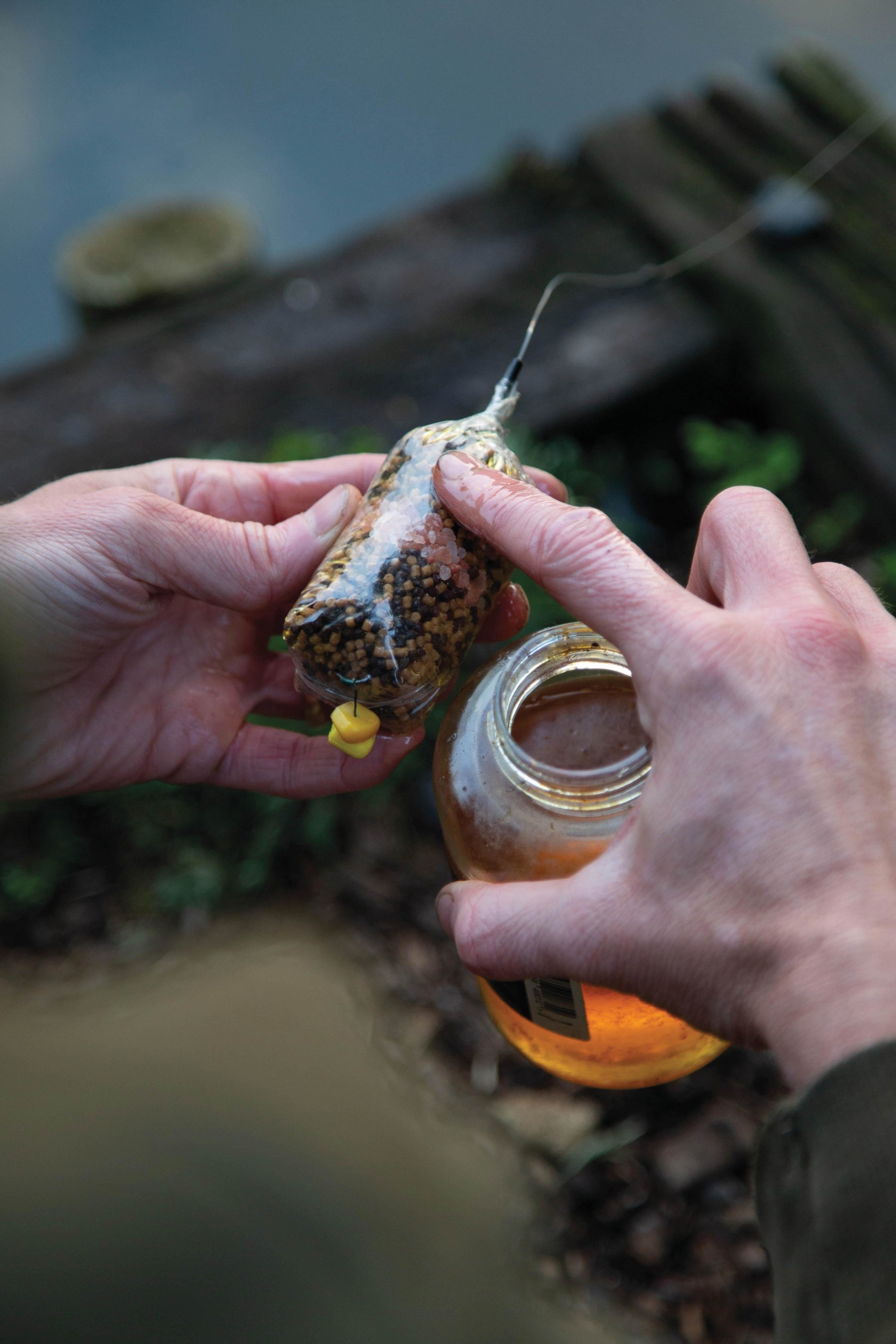
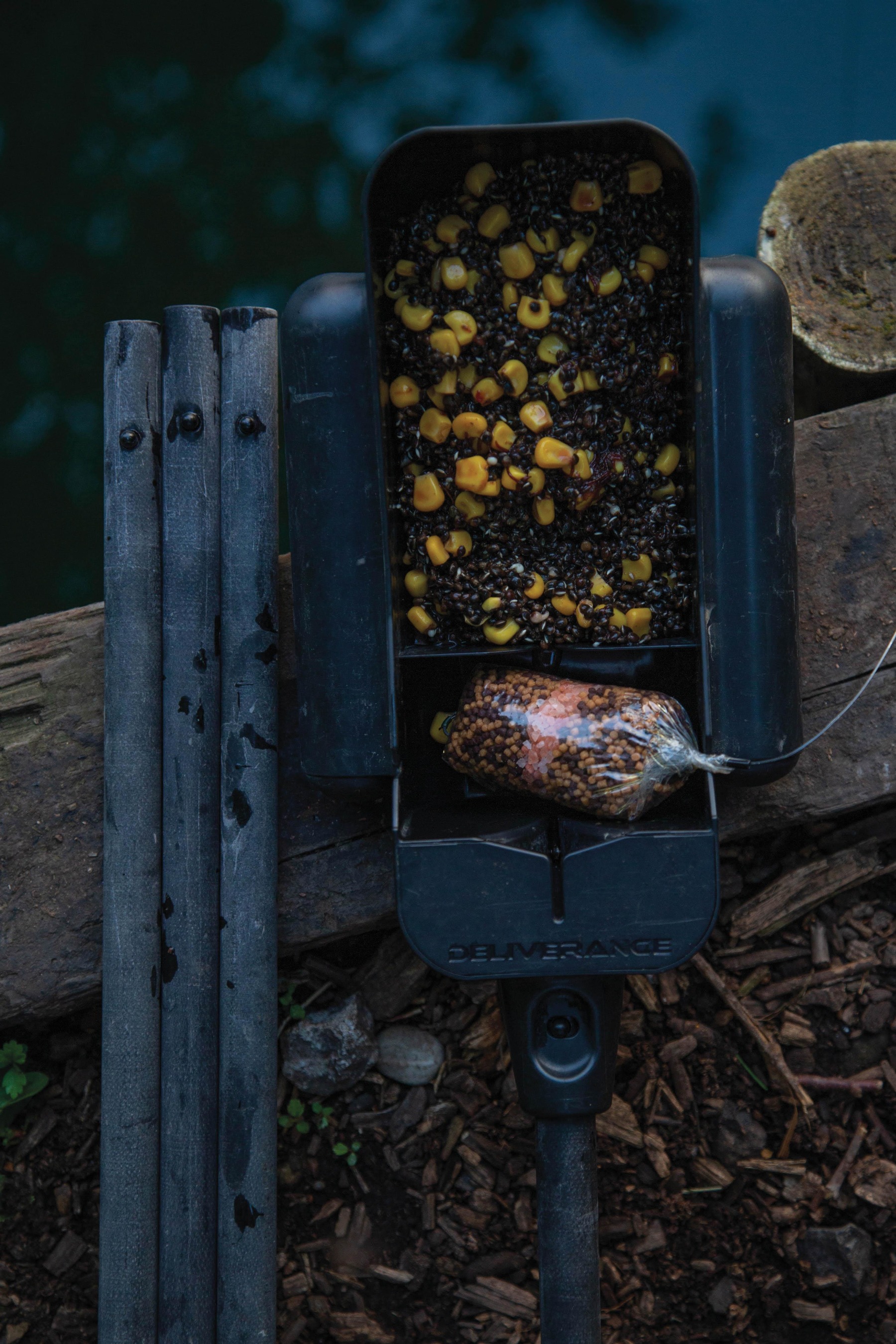
Suddenly, from over on the far side of the lake I heard some commotion. Young Shane Tambs had hooked and landed a fish from the Mallard swim. Tom went round, and he managed to get some immaculate photos. These really got the juices flowing when he showed me them after. In a lake full of commons, Shane had managed to bank a beautiful mirror by fishing a solid bag down the edge—great angling! It was getting dark, so after I’d enjoyed a few cold beers with Tom, I retired, full of optimism and wondering what the night ahead might bring.
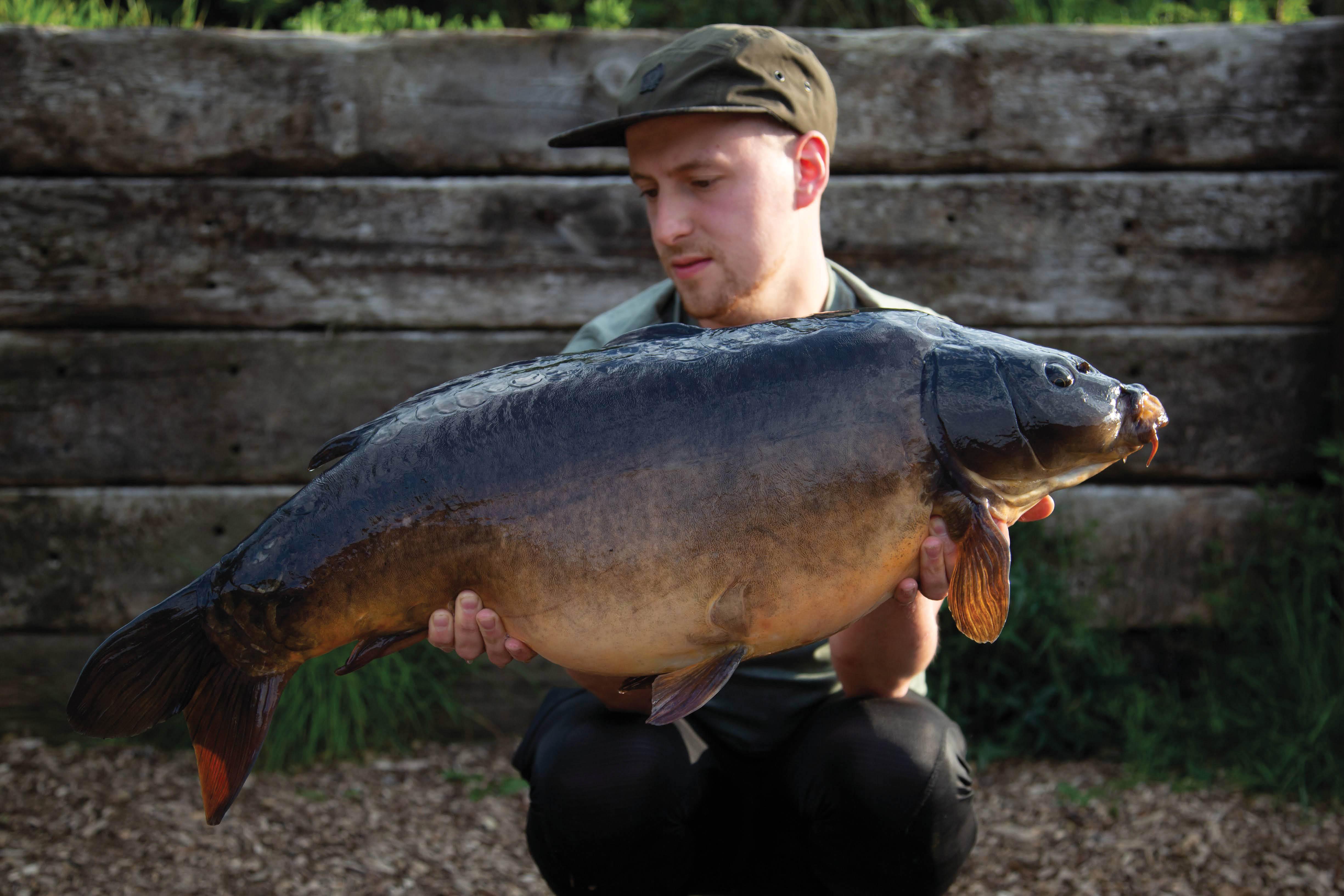
The first morning
I woke to a beautiful, yet disappointing morning, not having had any action overnight. I had been up at midnight and 4 a.m. listening, and had heard a lot of fish show in the no man’s land behind the island, but that was it. I left it until after bite time before I reeled in the rods. Unfortunately, the rig of the right-hand rod, where I’d seen signs of fish, had become snarled in some discarded line, the result of a crack-off. This was annoying, as I had wasted 12hrs’ angling, through which time a bite looked to be on the cards, but it was even more so because had we known, Tom and his team would have come straight out in the boat to rectify the situation. There really was no need for the line to have been left by whoever was responsible. They’d obviously left without informing the management team, and their inaction may have cost me a fish. I was pleased, however, that all the line had been removed from the water. It was no longer a threat to wildlife, or an inconvenience to other anglers.
Whilst I was redoing the rod, and having a brew and a bit of breakfast, I saw a large common crash out twice, this time on my side of the island and a bit further round, halfway between me and the next peg. I flicked a lead out on my marker rod and it cracked down hard. There was a large, polished spot about the size of a car bonnet under the roots of the overhanging tree. This was obviously an area that had been fed on hard over time, so I took the easy decision to place a rod here.
I used the exact same set-up as I’d used overnight, but went in really heavy with the bloodworm, adding all I had left to my mix. The spot was closer than where I’d fed before, and therefore easier to pole out bait to. I dropped my rig exactly where the fish had shown, right up against the bank. By feeling the rod as I tipped the rig out, I estimated it to be about two feet deep.
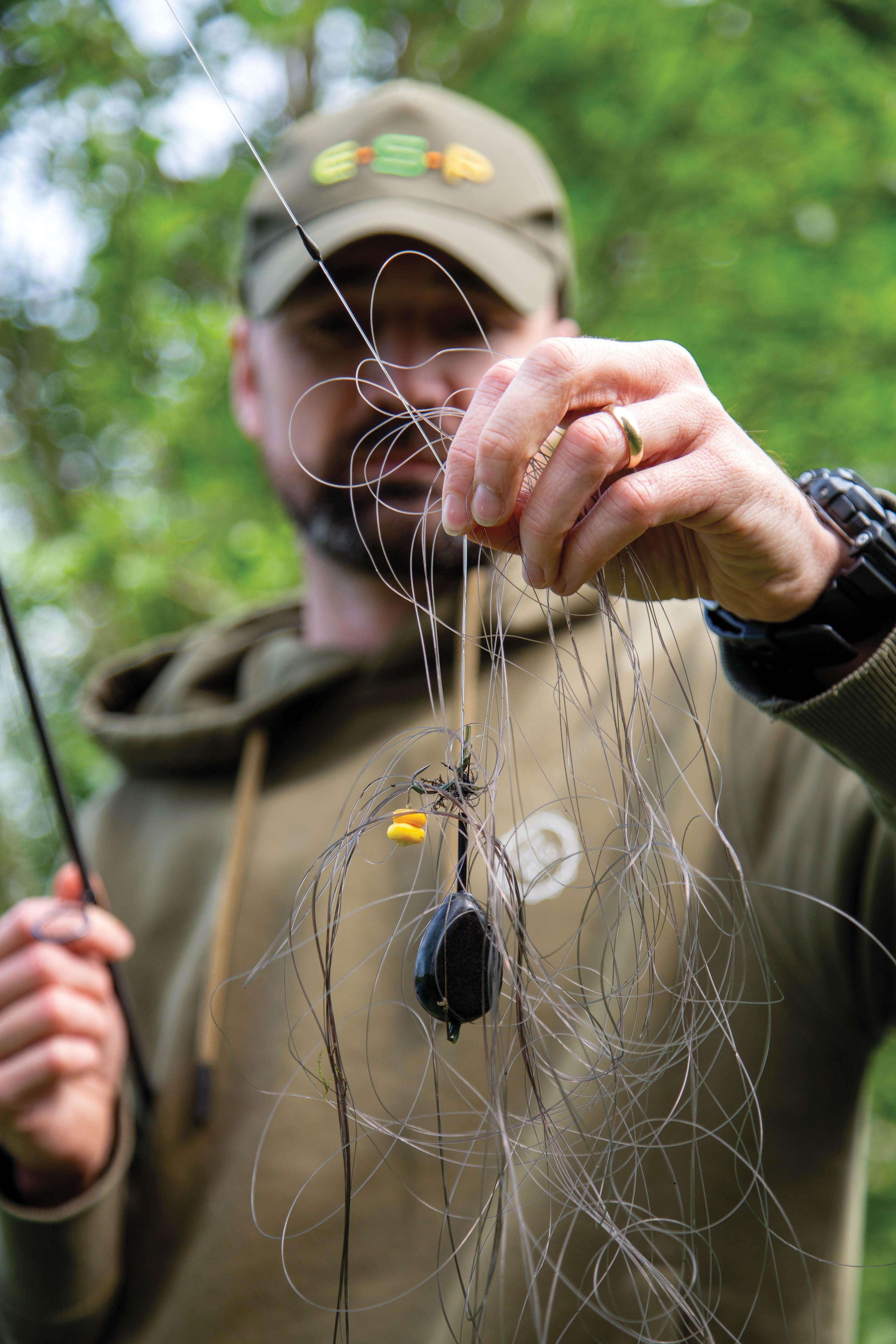
I checked all the margin spots before topping them up, but still hadn’t seen anything to go on. By this time, though, a few fish were appearing on the surface and were cruising around slowly. I knew the gulls were going to be an issue, and Tom kindly suggested that we could try and feed them off in his swim. After popping to the shops for a couple of bags of cheap mixers, he began to feed them. The gulls appeared immediately, and soon after had cleared the contents of the first bag. They then left, and we congratulated ourselves on a job well done. I ran back to my swim and fired out some oil-glugged Krill floaters between the two islands.
A fish showed interest straight away, and one or two others slowly started to take a pellet or two. About five minutes passed before the gulls reappeared. I ran back to Tom’s swim and fired out more mixers. These kept the birds occupied as I ran back to my swim to try and catch one of the fish that were taking. This procedure continued, and the next couple of hours saw me running repeatedly between the two swims. Plenty of opportunities were presenting themselves, but each time one occurred, the gulls would arrive.
In one instance, I had a fish approach the hookbait in the narrow channel between the swims, its mouth broke the surface. It looked nailed on to take the hookbait before a gull dive-bombed and stole it!
I persevered for another two hours or so, but I was becoming increasingly frustrated and also exhausted. Getting up during the night to listen for shows, and then running back and forth for around four hours had taken their toll. Admitting defeat, I decided to take a siesta. Before I rested, I tied up a four-foot Zig Rig, added a Krill pop-up and positioned it just under the surface in the middle of the two islands. Plenty of fish were transiting through, and I felt this was my best chance for a take.
It had started to drizzle, and after I’d rolled down the door of the bivvy, I drifted off into a nice snooze. Before too long, I was woken by a couple of single beeps from the alarm on the Zig rod. I made my way out and saw that the bobbin had dropped a couple of inches. As I stood watching, it pulled up tight. I lifted into it, but hit fresh air. It had clearly been a vicious liner. I put the rod back out and went back to bed for another doze ahead of getting the rods ready for the night. From a deep sleep, I slowly came to after hearing another couple of beeps.
A little disorientated, I wandered out to the rods. This time it was the right-hander on the new spot I had found that brought me round. I assumed that it was just another liner, before the bobbin cracked up to the blank and the tip bent round. I lifted into it, and whilst there was definitely something on the end, I felt as though I had actually hooked a bream. This was odd, though, as I wasn’t aware that any were in the lake.
I cranked in the unseen fish, and as it neared the net, a few head-shakes had me believing that it may be a very small carp, one that had perhaps avoided the recent netting. I reeled it all the way into the margin, applied a little extra pressure and up popped no bream, or indeed, small carp. A lovely big common rolled on the surface momentarily before going straight in the net. I was absolutely over the moon, as despite having worked really hard, I’d felt as though my chances of banking a fish had been drifting away.
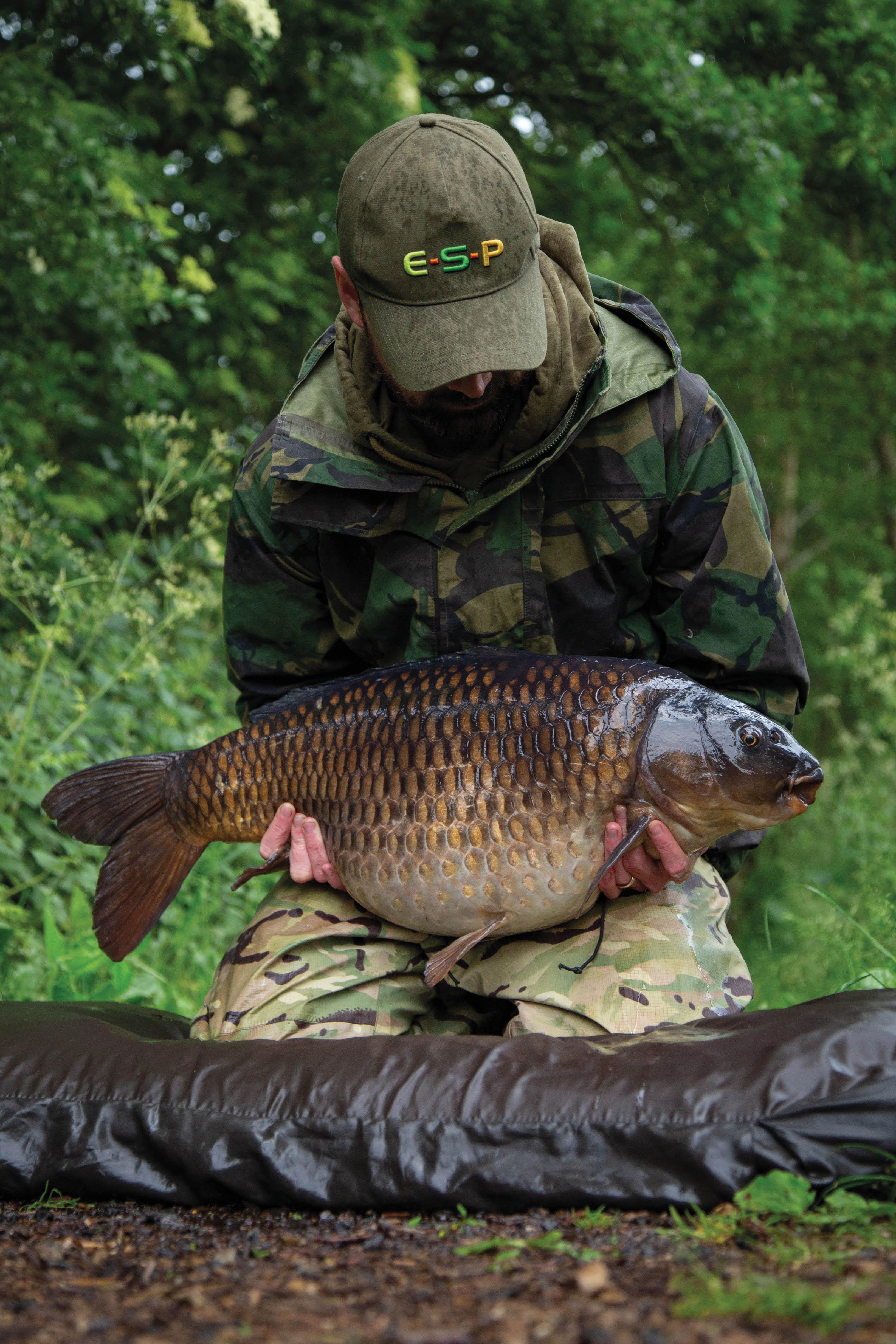
I placed the fish on the mat, and then carried it to the scales, where it went a very pleasing 24lb 8oz. It was an amazing fish: a dark, chiseled common, and definitely one of the originals from back in the ’90s. On closer inspection, I saw that it had a funny top lip, and when we compared it to the shots on Tom’s camera, it turned out to be the very same fish that I had missed twice off the top on the first day—when your luck is in and your name is on ’em, eh? I was absolutely thrilled to have caught one under such tough conditions. Thus far, it was the only fish that had been caught, Shane’s fish aside, during the previous 36hrs, and some 15 anglers had come and gone.
After Tom had taken some quality shots, begrudgingly I returned the fish to the water—I’d have happily admired it all day, such was the effort that went into catching it. After I slipped it back, I redid the rod. There was then only one thing to do, and that was enjoy a celebratory beer or two. I never take beers with me as they take up valuable space, but Tom seemingly had a full off licence in his cooler bag. They were gratefully welcomed!
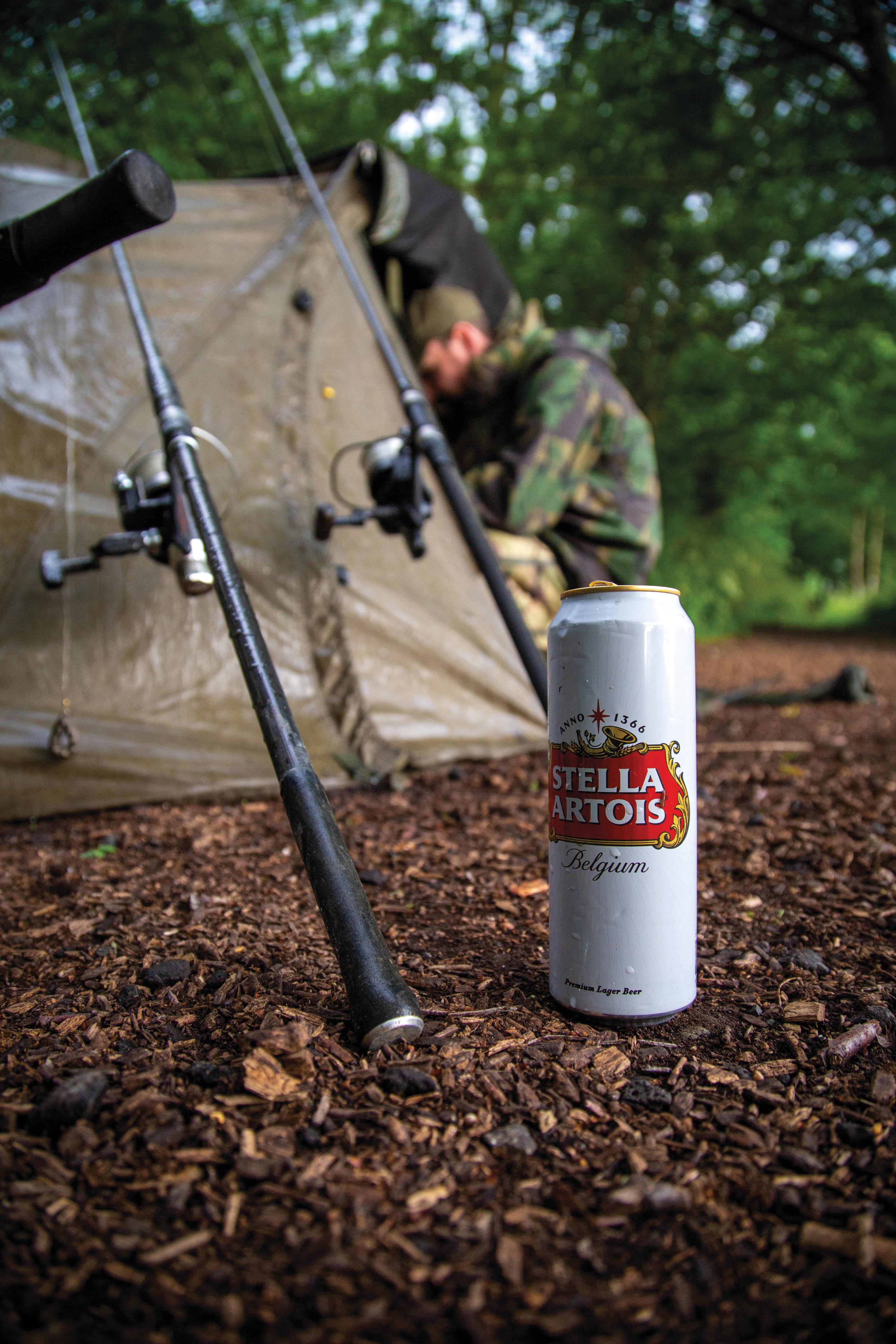
The final night
Before going to bed, I decided to change things on the left-hand rod, as this had remained very quiet throughout the trip. There was a six-foot channel between the islands, and fish were definitely passing between them whilst we had been there. I wanted to fish a high-attract pop-up, but not necessarily a bright one as I was sure the fish see a lot of these. I opted for a homemade, 12mm Sticky Krill pop-up, as these had worked so well for us at Linear last month. I fished this on a Slip-D–Ronnie-style set-up with a size 6 ESP Cryogen Curve Shanx hook, and one of Gemini’s pre-tied, fluorocarbon Ronnie Booms. It was the first time I’d used them, and they make things so quick and easy when you need to swap rigs. They remove all the hassle of tying them up, too. The rig went out as a single hookbait in the middle of the channel.
A home-prepared chicken kebab, a vegetable samosa that Tom had brought back from the butcher’s in town, and a final beer were all consumed, gratefully. Then, I was off to bed, rather pleased with how the day had panned out.
Fish-wise, the night was again quiet, and it demonstrated just how difficult the session had been. I was up early for a final look around. As I checked the margin spots, I noted very subtle bubbling over one of them, against a set of pads. I wasn’t completely convinced that a fish was responsible, but with nothing else to go on, I decided to finish the session with a rod there. I tied up a solid bag with a corn hookbait and lowered it to the spot. Unfortunately, nothing transpired, and with the strict 8 a.m. changeover imminent, it was time to load up the barrow and make the move homeward.
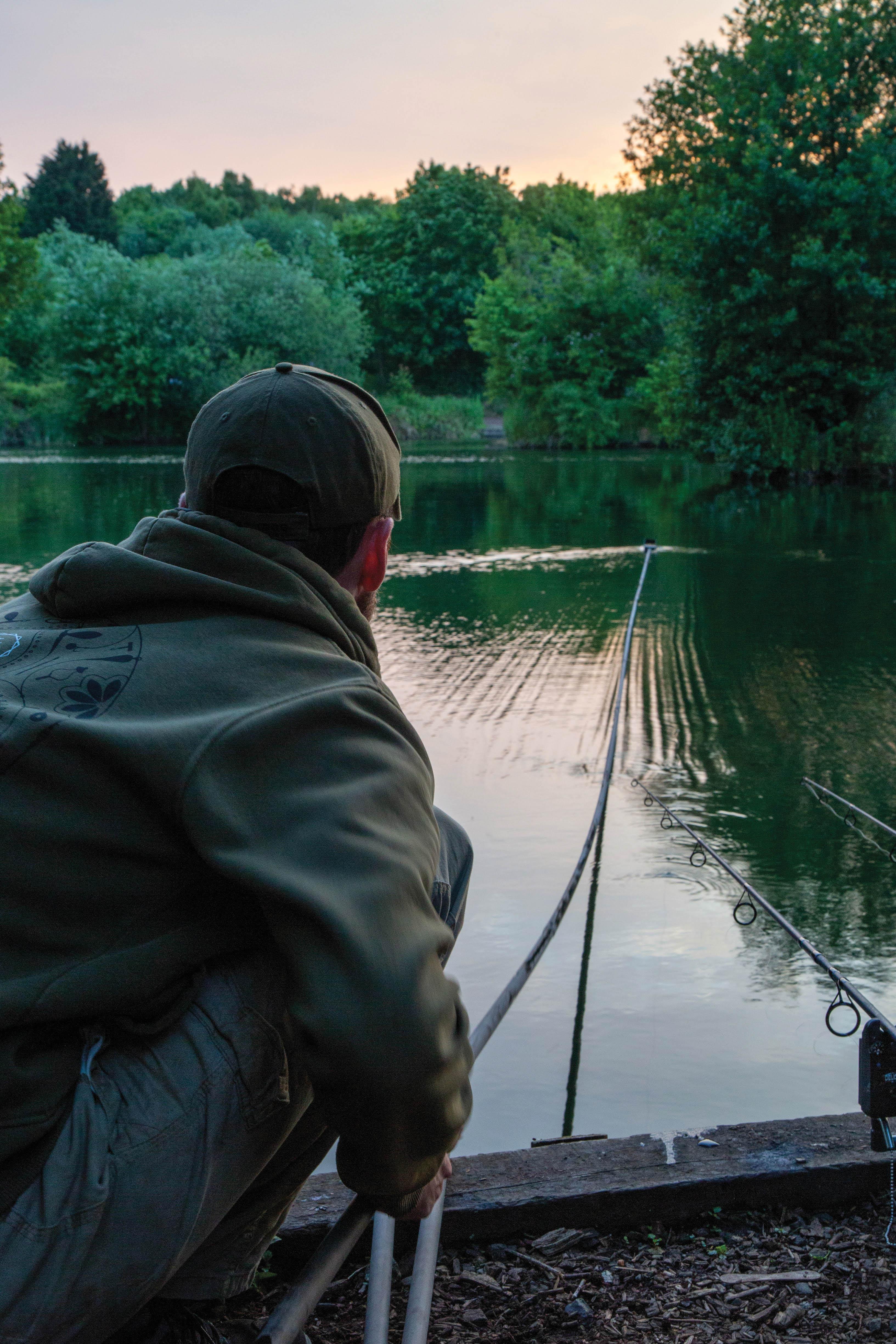
Venue Details
Name: Lavender Hall Fishery
Location: Berkswell, Coventry, CV7 7BN
Stock: 30 fish to 30lb
Features: Islands, pads and margins
Number of swims: 8
Facilities: Extensive tackle shop, a cafe and toilets
Key rules: Barbless hooks, no shelf-life boilies, Spombs to be used with a Spomb Float
Price: £16 per day; £30 per 24hrs
Contact: info@lavenderhallfishery.co.uk or call 07796 998309. You can book through the Catch app.
